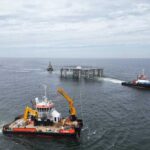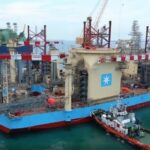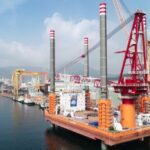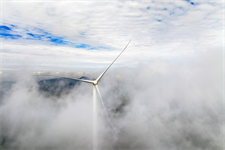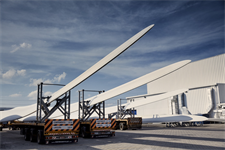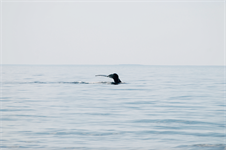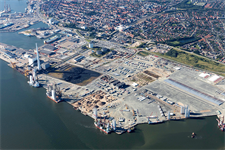New technologies promise to speed up offshore wind installation and floating maintenance
Energy Disrupter
Dutch marine engineering consultancy GustoMSC and NOV Lifting & Handling have unveiled a new solution to improve the speed and efficiency of blade installation on offshore wind turbines. The Sjøhest (“seahorse” in Norwegian) wind blade installation (WBI) solution consists of a dedicated new build GustoMSC NG-5500XL, or a smaller converted jack-up vessel, equipped with a smaller handling crane that picks up the blades from the rack and feeds the trolley.

As a telescopic leader boom connects the Sjøhest with the already installed tower, the leader boom connection aligns with the tower’s movements. This creates an aligned movement between the blade and the tower, according to the company. Once connected to the trolley, the blade is horizontally transported up along the leader, rotated into a vertical position, and connected to the rotor.
The companies said the Sjøhest solution offers an alternative installation method whereby larger installation jack-up vessels equipped with heavy-lift cranes install the towers and nacelles, while the dedicated Sjøhest WBI jack-up vessel with integrated equipment installs the blades. “[This] ensures major time-savings as all three blades per turbine can be installed in one day,” they added.
Onsite floating maintenance
For the floating wind market, meanwhile, Norway-based Fred Olsen 1848 has teamed up with Dutch lifting specialist Huisman to solve the challenge of major component exchange at sites. They have signed a memorandum of understanding (MoU) for a floating maintenance solution, which they expect to have at sites by the end of the decade.
The new solution and operational procedure enables the exchange of major turbine components offshore without the need for dynamic lifts, which are expensive and entail high operational risk.
Sofie Olsen Jebsen, CEO of Fred Olsen 1848, said it would be a ‘gamechanger” in the market, stressing that current floating wind component exchange solutions are too costly in terms of assets required, downtime of the turbine and available weather windows. The new solution “can enable the industrialisation of floating offshore wind”, she added.
Now entering the design study phase, the floating maintenance solution will not require foundations to be disconnected and towed to port, according to the partners. Instead the crane is positioned on the platform – it is compatible with most semi-submerged floating structures and operates with the same motions. No dynamic lifts are required.
The crane is designed to be transported on regular support vessels, and deployed by a quick connection system. A battery storage system allows it to be powered from the turbine’s auxiliary systems.

